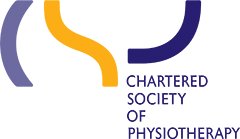Knee Osteoarthritis (OA)
Osteoarthritis is a common joint condition, particularly in the knees, with reports of 18.2% (4.11 million) people aged over 45 years having this condition. The pathophysiology of osteoarthritis is progressive loss of the articular cartilage and a remodelling of the bone underneath which can lead to the formation of osteophytes (bone spurs) and a loss of joint space over time leading to a restriction in joint range of movement and pain
Symptoms
People with knee osteoarthritis will present differently, with some people reporting constant or activity related pain. Commonly people will report:
- Stiffness, particularly first thing in the morning or after prolonged positions
- Pain that gradually gets worse
- Swelling
- Decreased range of movement
- Impairment in everyday activities
- Joint deformity
- Increased sensitivity to cold and / or damp
- Crepitus (noise created when the joint moves).
Diagnosis
A physiotherapist will typically be able to make a diagnosis via a thorough subjective and objective examination.
During the subjective history the patient will report common symptoms as already mentioned. During the objective examination there may be some swelling evident and a loss of range of movement due to joint changes associated with osteoarthritis. Should the condition be longstanding then there may also be joint deformity.
Sometimes osteoarthritis can be diagnosed via an x-ray.
How can Physiotherapy help?
- Patient advice and education
- Activity modification such as pacing
- Knee bracing / taping to help offload
- Discussion and advice around pain and symptom management
- Graded exercise programme focussing on the whole lower limb
- Cryotherapy












